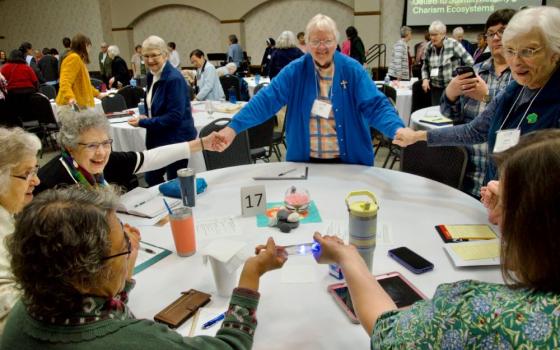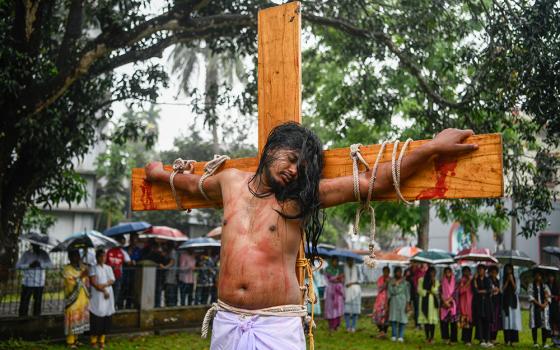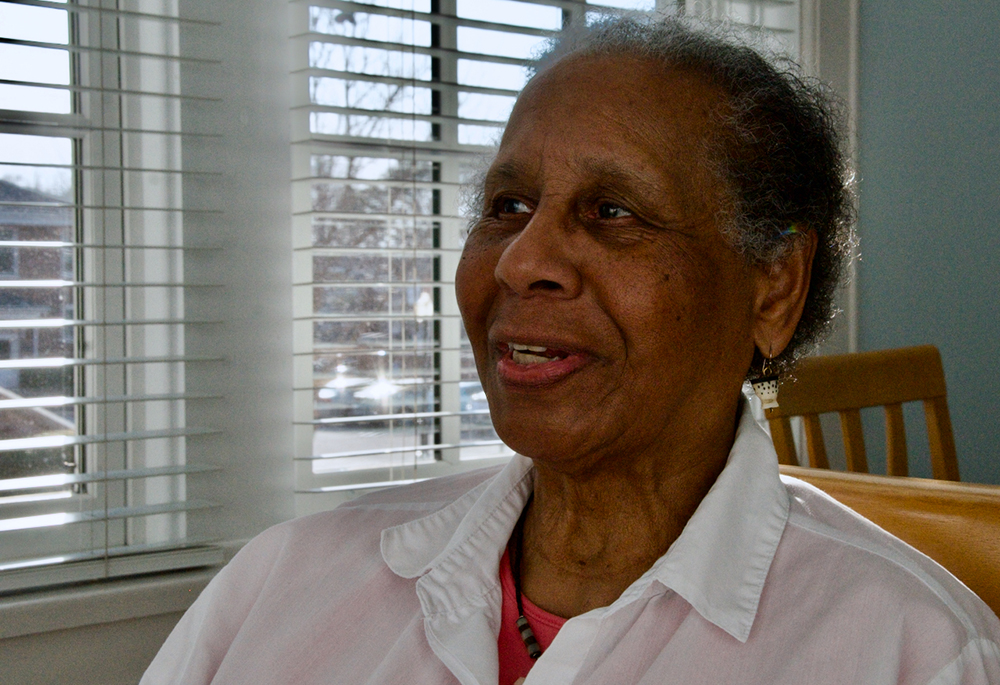
Sr. Barbara Moore of the Sisters of St. Joseph of Carondelet speaks about her participation in the civil rights marches in Selma, Alabama, in 1965. (GSR photo/Dan Stockman)
Sr. Barbara Moore didn't know what she was getting into when she accepted an invitation from the bishop of Kansas City to be part of a civil rights march in Selma, Alabama, in 1965.
"There was no hesitation," Moore recalled. "Like a fool, I said yes."
But the Sister of St. Joseph of Carondelet found out quickly.
Just days before, civil rights marchers in Selma had been brutally beaten by Alabama state troopers, leaving 17 hospitalized and 50 others with minor injuries, an event that became known as Bloody Sunday. Television footage of the attacks on peaceful protesters helped galvanize support for the cause.
When organizers called for religious leaders of all faiths to join the effort to restore Black voting rights, a delegation of sisters and priests from Kansas City responded, as did groups from across the country, including St. Louis.
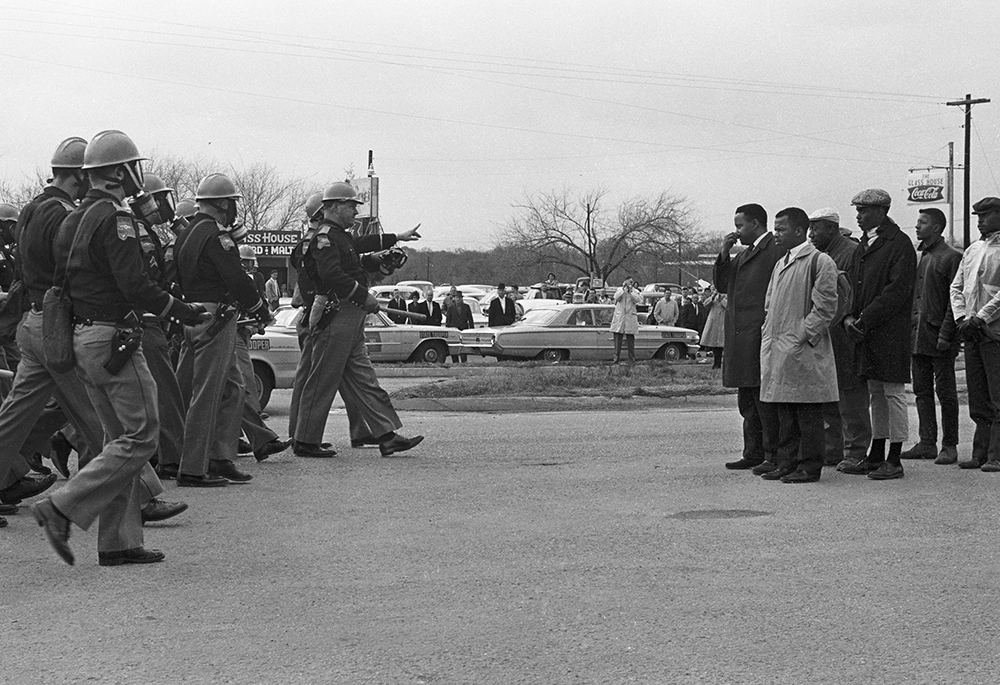
Protestors and police officers face off in Selma, Alabama, March 7, 1965, in what has come to be known by civil rights activists as Bloody Sunday. (OSV News/Courtesy of Magnolia Pictures)
Moore admits now that "I didn't know if I would come back or not," but came face to face with that reality on the way from the airport into Selma: houses along the route had whites standing on their porches with shotguns.
Moore said there were no incidents before, during or after the march, but the message was clear.
"I just prayed," she told Global Sisters Report. "Fortunately, no one was accosted."
To participate, marchers had to take part in training sessions on nonviolent protest and how not to respond to provocation — or worse.
"They told you how to conduct yourselves," Moore said. The training only reinforced the idea of what could happen. "I was really concerned down there."
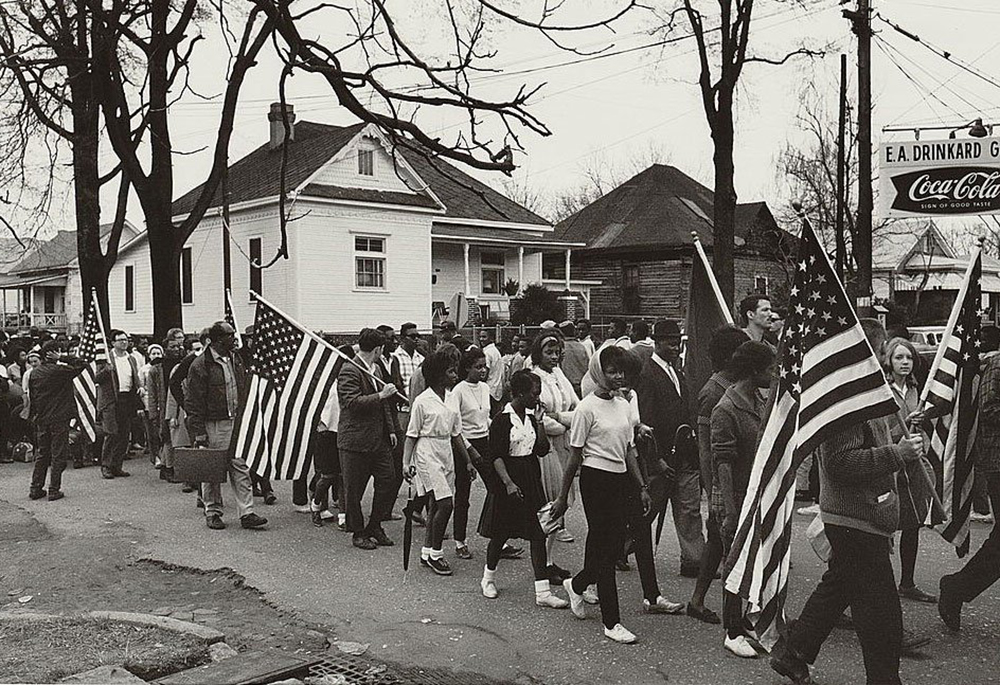
Participants marching in a civil rights march from Selma to Montgomery, Alabama, in this 1965 photograph courtesy of the Library of Congress. (OSV News/Reuters/Library of Congress)
Moore, who was 26 during the march, has told her story many times. But March 15 was special: the Sisters of St. Joseph hosted a day of events at St. Joseph's Academy, marking the 60th anniversary of Bloody Sunday and the marches, celebrating the St. Joseph sisters who took part, and unveiling a treasure trove of archival items that are now preserved there, along with a new website to explore them.
Congregational archivist Catherine Lucy said the collection includes all the research documents and footage, used and unused, for the 2007 PBS documentary, "Sisters of Selma: Bearing Witness for Change." The collection had been housed at Avila University in Kansas City.
The March 15 event featured a screening of "Sisters of Selma," followed by a panel discussion that included Moore, Sr. Rosemary Flanigan, Sisters of St. Joseph of Rochester Sr. Barbara Lum, and "Sisters of Selma" director Jayasri Hart. Also on the panel was Claire Hundelt, daughter of Charles Vatterott Jr., whose behind-the-scenes work helped make the trips to the march possible and included carrying a briefcase full of cash to pay bail for anyone arrested.
Lucy said one of the stipulations of moving the Selma collection to St. Louis was creating a website dedicated to the documentary and any stories that have come out since it was made. SistersOfSelma.org does not include everything in the archive but does allow researchers to see what the archive houses so they can request in-person research.
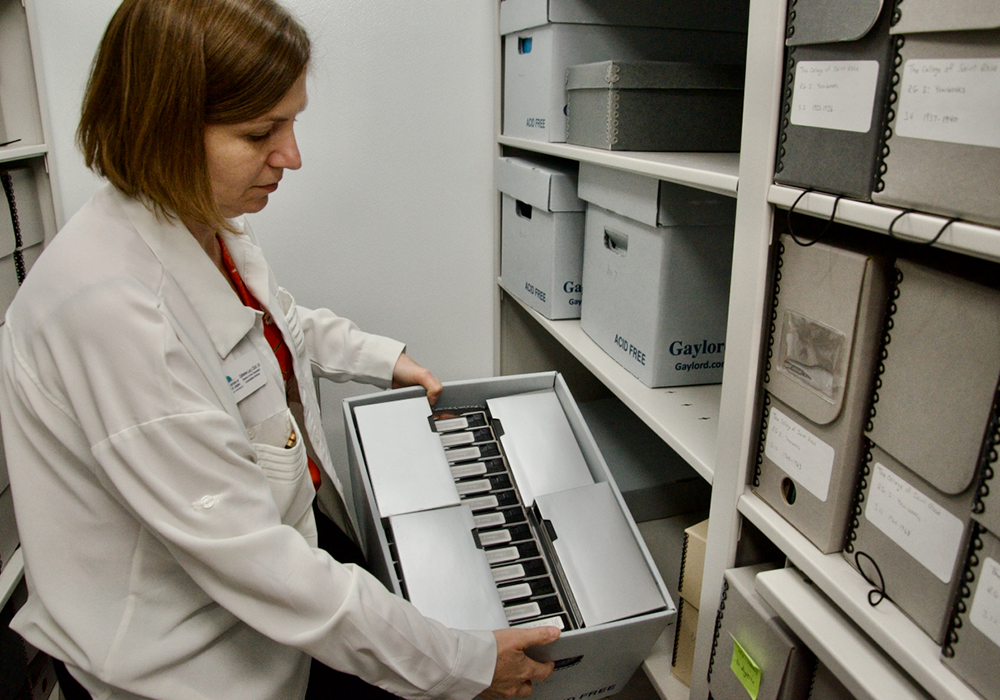
Catherine Lucy, archivist for the Sisters of St. Joseph of Carondelet, shows part of the collection of items used in the 2007 PBS documentary, "Sisters of Selma: Bearing Witness for Change," including about 70 hours of footage shot for the 60-minute movie. (GSR photo/Dan Stockman)
The collection includes the approximately 70 hours of footage shot for the 60-minute documentary and biographies of 13 Catholic sisters who were in Selma at the time, either marching or treating victims at Good Samaritan Hospital, the only hospital in the area that would treat African Americans.
Lucy said there are also letters between sisters about their experiences, newspaper articles and a "finding aid" — a sort of map to the collection.
"We were very excited to get the material because our sisters had such a prominent part in the documentary," Lucy said.
Moore said the Sisters of St. Joseph not only treated victims from the Bloody Sunday march but let those who traveled to take part in the later marches stay at the hospital.
"It was a profound experience for me," she said. "God was with us."
Advertisement
Moore grew up in Birmingham, Alabama, until her family moved to St. Louis when she was 6, so she remembers having to sit at the back of the bus and segregated schools, but nothing like the tension and open hostility she witnessed in Selma.
"Birmingham was nothing like that," Moore said. "We were comfortable."
The atmosphere in Selma was remarkably different when she returned for the 50th anniversary, attended by then-President Barack Obama. "That was a wonderful experience," she said.
After the Bloody Sunday march, there were a handful of marches within Selma while organizers waited for a federal court order allowing their march from Selma to the state capitol in Montgomery, a four-day march led by the Rev. Martin Luther King Jr. and other religious leaders.
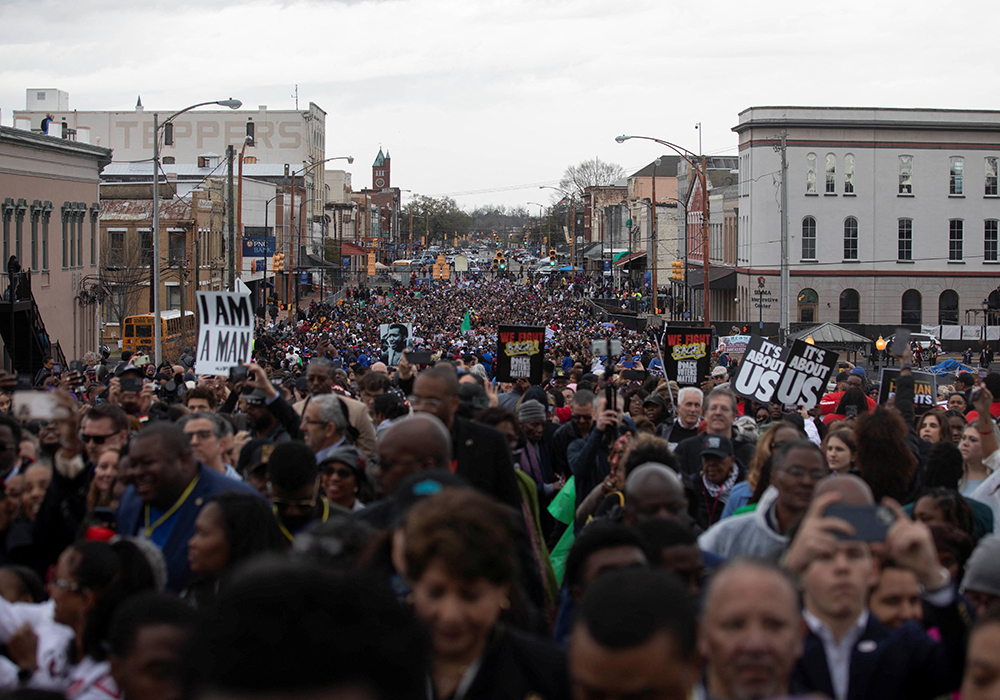
Demonstrators march across the Edmund Pettus Bridge to commemorate the 60th anniversary of "Bloody Sunday" in Selma, Alabama, on March 9, 2025. Sixty years ago, on March 7, Alabama Highway Patrol troopers attacked civil rights demonstrators protesting white officials' refusal to allow Black Alabamians to register to vote and the killing days earlier of Jimmie Lee Jackson, a minister and voting rights organizer who was beaten and fatally shot by a state trooper in nearby Marion. (OSV News/Reuters/Alyssa Pointer)
Moore knew when she accepted the invitation to march in Selma that the trip would be important but had no idea how it would echo across the decades. In January, when Moore attended the play "Hold On!" about the march from Selma to Montgomery, a companion told the cast Moore had taken part in the marches. She was introduced after the play to a standing ovation, invited onto the stage for more applause and a photo with the cast.
"They were truly in awe and appreciative of her witness," Sr. Barbara Jennings wrote later. "I was so appreciative of them, their respect and appreciation for her. Tears everywhere!"
Moore said that, unfortunately, the need for action is as strong as ever.
"We need to do something now. It's one thing to look back at what happened, but how does it affect me today? As long as I have breath, silence is not an option. The struggle goes on."
As Christians, Moore said, we don't have a choice.
"It's being people of integrity," she said. "It's our love of God and our love of the dear neighbor without distinction."


